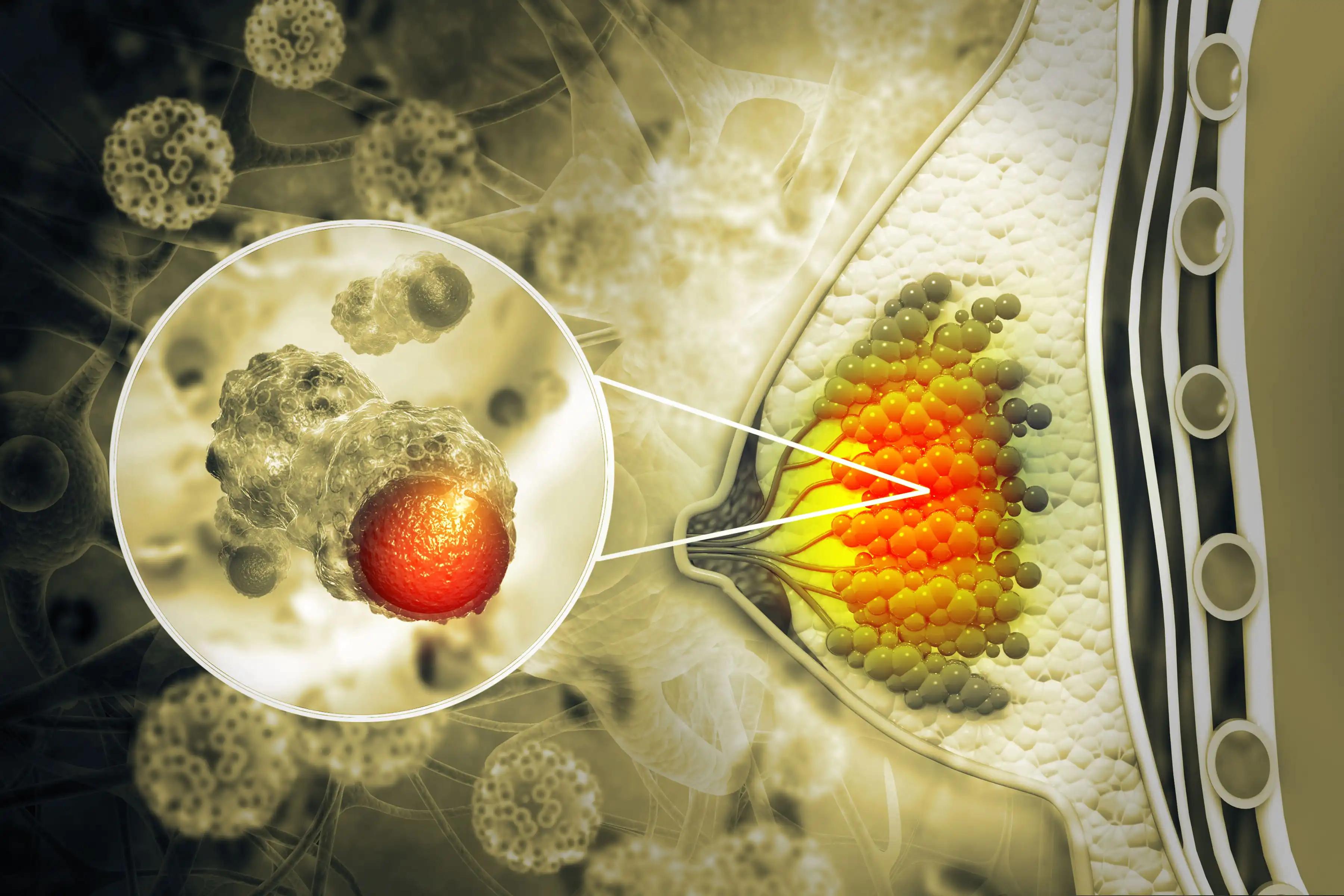Key Points:
- The I-SPY2 trial evaluated the combination of ganetespib and standard chemotherapy in patients with high-risk early-stage breast cancer.
- Ganetespib did not result in substantially higher pathologic complete response rates in HER2-negative breast cancer compared to standard treatment alone.
- HSP90 inhibitors may have more potential for use in other clinical settings, such as HER2-positive disease or in combination with anti-PD1 therapy in triple-negative breast cancer.
- Final estimated pCR rates were 26% vs. 18% HER2-negative, 38% vs. 22% HR-negative/HER2-negative, and 15% vs. 14% HR-positive/HER2-negative for ganetespib vs. control, respectively.
- The predicted probability of success in phase 3 testing was 47% HER2-negative, 72% HR-negative/HER2-negative, and 19% HR-positive/HER2-negative.
In a multicenter, phase II adaptively randomized neoadjuvant (NAC) clinical trial named I-SPY2, researchers evaluated the Heat Shock Protein 90 (HSP90) inhibitor ganetespib in combination with standard chemotherapy in patients with high-risk early-stage breast cancer. The trial’s primary endpoint was pathologic complete response (pCR), and multiple novel investigational agents plus standard chemotherapy were evaluated in parallel.
From October 2014 through October 2015, patients with HER2-negative breast cancer and tumors 2.5 cm or larger, based on hormone receptor (HR), HER2 and Mammaprint status, were eligible for randomization to ganetespib. Of the 233 women included in the final analysis, 140 were randomized to the standard NAC control, and 93 were randomized to receive 150 mg/m2 every three weeks plus weekly paclitaxel for 12 weeks, followed by AC.
The hormone receptor status of each arm was matched (HR-positive in 51–52%). Before achieving total capacity, ganetespib did not show statistical significance across any of the biomarker profiles evaluated. The final estimated pCR rates were 26% vs. 18% HER2-negative, 38% vs. 22% HR-negative/HER2-negative, and 15% vs. 14% HR-positive/HER2-negative for ganetespib vs. control, respectively. The predicted probability of success in phase 3 testing was 47% HER2-negative, 72% HR-negative/HER2-negative, and 19% HR-positive/HER2-negative.
In HER2-negative breast cancer, adding ganetespib to conventional treatment is not expected to significantly increase pCR rates compared to standard NAC. Neither the HSP90 pathway nor replicative stress expression markers predicted response. Even in other therapeutic contexts, such as HER2-positive disease or in combination with anti-PD1 neoadjuvant chemotherapy in triple-negative breast cancer, HSP90 inhibitors remain of modest clinical interest.
Source: https://pubmed.ncbi.nlm.nih.gov/36456573/
Clinical Trial: https://clinicaltrials.gov/ct2/show/NCT01042379
Lang JE, Forero-Torres A, Yee D, Yau C, Wolf D, Park J, Parker BA, Chien AJ, Wallace AM, Murthy R, Albain KS, Ellis ED, Beckwith H, Haley BB, Elias AD, Boughey JC, Yung RL, Isaacs C, Clark AS, Han HS, Nanda R, Khan QJ, Edmiston KK, Stringer-Reasor E, Price E, Joe B, Liu MC, Brown-Swigart L, Petricoin EF, Wulfkuhle JD, Buxton M, Clennell JL, Sanil A, Berry S, Asare SM, Wilson A, Hirst GL, Singhrao R, Asare AL, Matthews JB, Melisko M, Perlmutter J, Rugo HS, Symmans WF, van ‘t Veer LJ, Hylton NM, DeMichele AM, Berry DA, Esserman LJ. Safety and efficacy of HSP90 inhibitor ganetespib for neoadjuvant treatment of stage II/III breast cancer. NPJ Breast Cancer. 2022 Dec 1;8(1):128. doi: 10.1038/s41523-022-00493-z. PMID: 36456573; PMCID: PMC9715670.



